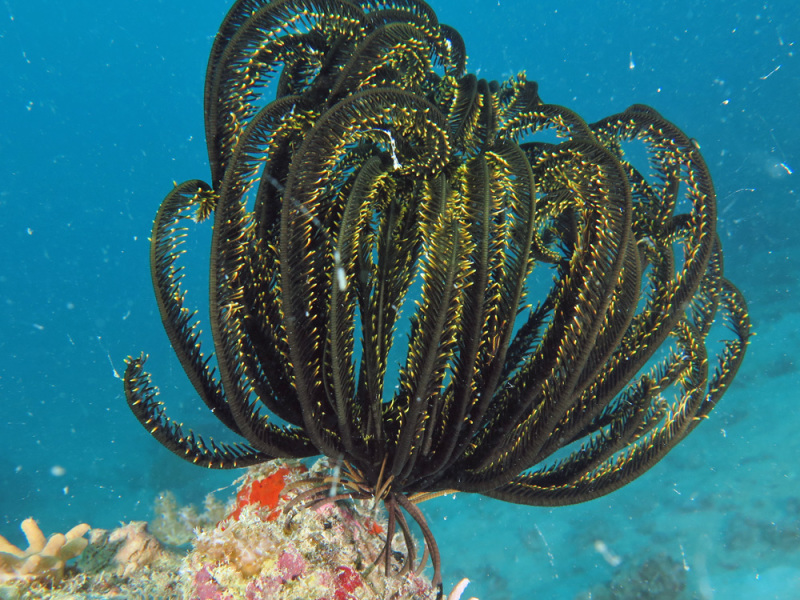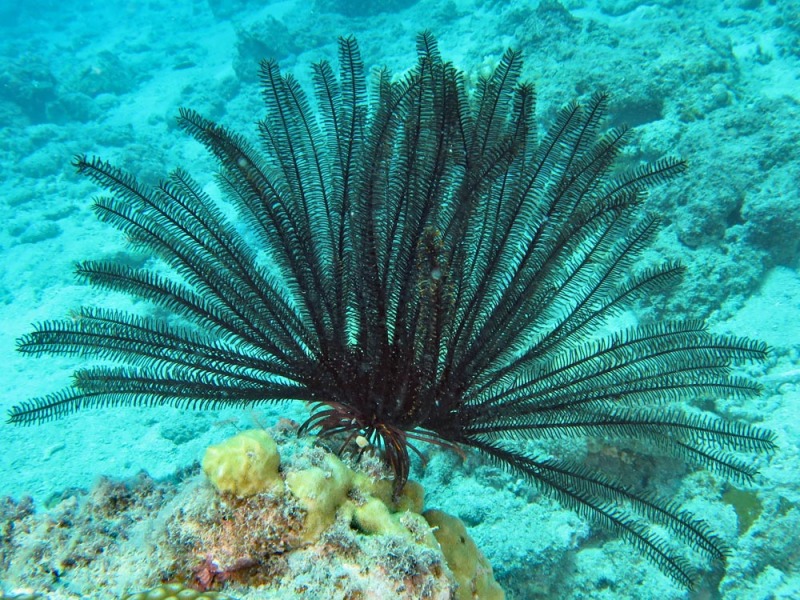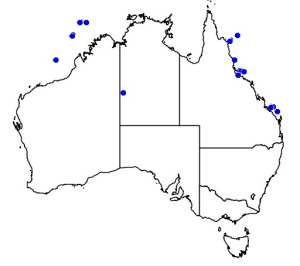
©Anne Hoggett: Anneissia bennetti at the base of the reef slope between Bird and South Islands, Lizard Island Group.

©Lyle Vail and Anne Hoggett: Another colour form of Anneissia bennetti showing typical posture and cirri.
Colours
Distinguishing features
Comatulids are distinguised from all other featherstar families by having terminal segments of the oral pinnules modified to form a comb. They also have a distinctive "feel" due to well developed hooks on most pinnules that cause them to cling like velcro.
Anneissia bennetti is a large crinoid that is always fully exposed, clinging to hard corals with its large, strong cirri. The arms are held upwards and outwards in contrast to other exposed comasterids (such as Clarkcomanthus alternans and species of Comaster) in which the arms appear tangled.
Colour varies widely and is of no use in identification (e.g. yellow, orange, brown, green, black and white). Brachials either a single colour or gently graduating colours along the arm. Pinnules can be a single colour or several colours.
Size
- Up to 20 cm (Arm length)
Depth range
- Depth range data is not yet available.
Synonyms
Distribution
Distribution and habitat preferences
Perched on living or dead hard coral in areas of moderate to high water movement. They are often found in aggregations.
Found most commonly on exposed reef slopes from North Point around the northern, eastern and southern side of the Lizard Island group.
Behaviour
Anne Hoggett observed a single specimen spawning just before sunset on 30 December 2008 at an unnamed reef about 4 nautical miles EENE of North Direction Island. Tide was near low but there was still a moderate current running. Spawning was sudden, explosive and it was all over in a couple of seconds (see photo).
Web resources
References
References that assist with identification
- Clark, A.M. and F.W.E. Rowe (1971). Monograph of shallow-water Indo-west Pacific echinoderms British Museum (Natural History), London.
- Rowe, F.W.E., A.K. Hoggett, R.A. Birtles and L.L. Vail (1986). Revision of some comasterid general from Australia (Echinodermata: Crinoidea), with descriptions of two new genera and nine new species, Zoological Journal of the Linnean Society, 86: 197-277. LIRS catalog number 198.
- Summers, M. M., C.G. Messing and G.W. Rouse (2014). Phylogeny of Comatulidae (Echinodermata: Crinoidea: Comatulida): A new classification and an assessment of morphological characters for crinoid taxonomy, Molecular Phylogenetics and Evolution, 80: 319-339. LIRS catalog number 1813.
- View all references







